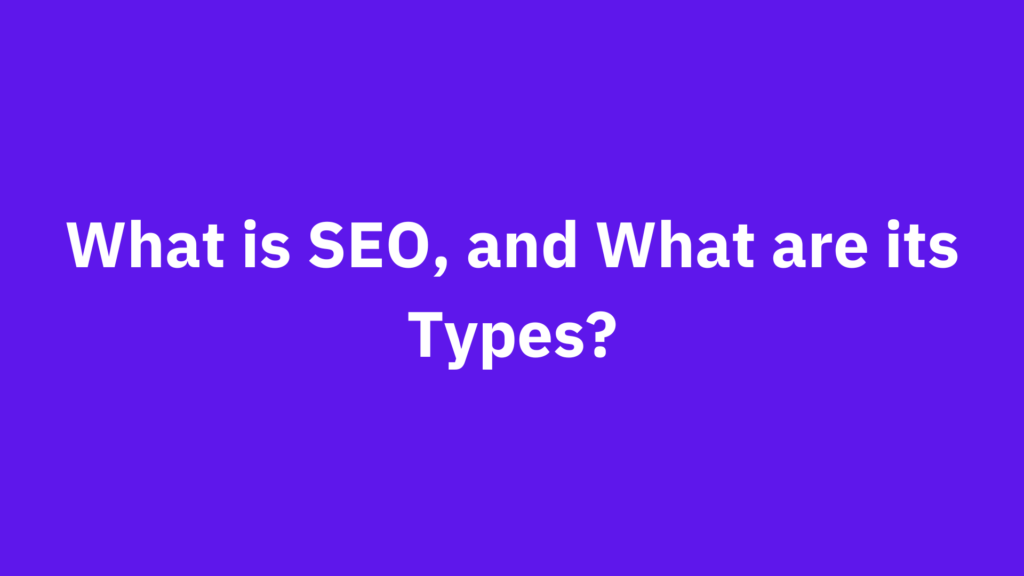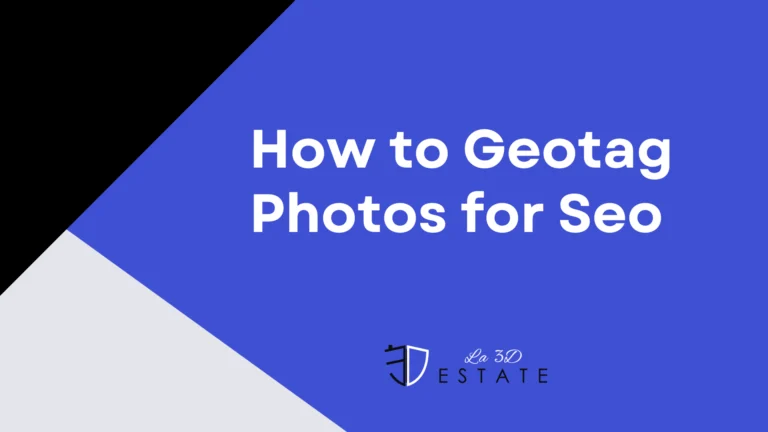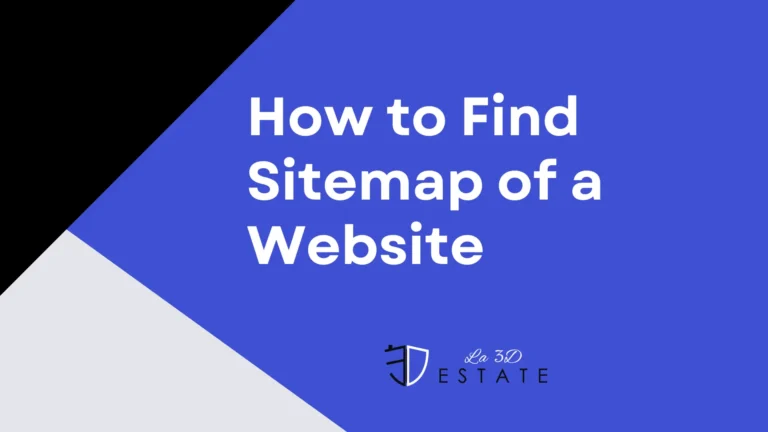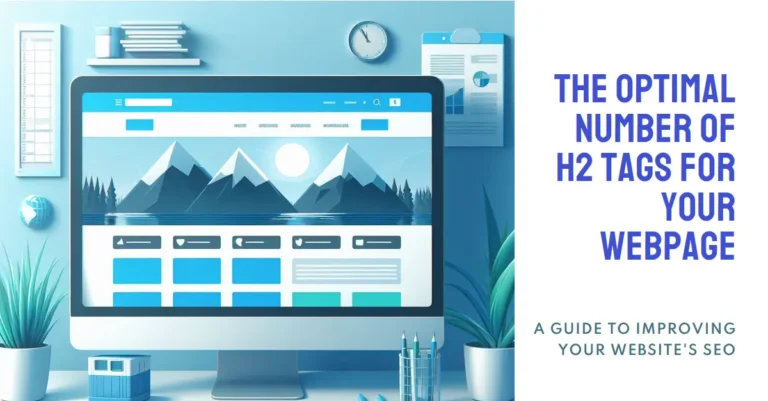Search engine optimization, or SEO for short, is a marketing strategy that involves making your website content and on-page optimization (including keyword research) as great as possible so that your website is more likely to rank high in search engine results pages (SERPs).
In layman’s terms, SEO allows your business website to rank on Google and other search engines. By ranking high on search engine results pages, you can increase traffic to your website and potentially increase sales.
The different types of SEO
There are various types of SEO, each with its own benefits and goals. It’s essential to select the right tactic for your website based on the content you produce and the target audience you’re targeting.
On-page optimization, for example, focuses on improving the ranking of a website’s title, metadata, backlink profile, and page content. Back linking is the process of linking a website to high-quality pages from other websites.
Social media optimization involves optimizing a website for social media sharing by using effective social media titles, descriptions, and images. SEO is an essential part of online marketing and can help a website grow in traffic and impact.
We will discuss the different types of SEO that you must know for your business.
On-Page SEO
On-page SEO is the process of optimizing your website content and structure in order to make it appear higher on search engine results pages (SERPs). This includes ensuring that your website’s content’s title tags, metadata, keyword density, etc. are all optimized for search engine visibility.
In addition, on-page SEO includes creating high-quality, relevant pages that are easy to navigate. Anchor text and other navigational elements can also be strategically used to improve user experience and drive clicks towards your website content.
What is an example of on-page SEO?
An example of on-page SEO would be including a title tag that accurately reflects the content of your website, using keyword-rich metadata in your titles and descriptions, and ensuring all page content is well written with high levels of keyword density. Make sure proper Headings, structure data, Images, anchor texts, and links are used as well.
Off-Page SEO
Off-page SEO is the process of increasing a website’s visibility and ranking through strategic link building. Links are important because they indicate that your website is credible and relevant.
Linkbuilding includes creating valuable, high-quality articles that promote your website content, recruiting industry leaders to write positive guest posts, outreach to influencers in your target market, etc.
By targeting quality backlinks rather than just quantity, you can improve the longevity and authority of your site on search engine results pages (SERPs).
Technical SEO
Technical SEO refers to optimizing a website’s content, structure, and design in order to ensure that it looks and operates properly on all devices. This includes making sure your website loads quickly, using keywords throughout your pages coded correctly, etc.
By taking the time to optimize these key areas of your site, you can improve the user experience and encourage even more people to visit your website.
Technical SEO also includes fixing technical issues so google algorithms can your website’s content better.
White-Hat SEO
When it comes to ranking high on search engine results pages (SERPs), there are Three main methods of SEO: white-hat, black-hat, and Greyhat SEO. White-hat SEO is the most ethical form of SEO as it employs no spam or backlinking tactics to improve website rankings.
White-Hat SEO is a technique that uses search engine optimization techniques without compromising your website’s integrity or hiding any information from the search engines. This includes using high-quality, keyword-rich titles and descriptions as well as using correct tags for your pages.
White-Hat SEO also includes building links in a manner that does not affect your site’s organic traffic. For example, you would not submit fake backlinks or try to trick the search engine algorithms into ranking higher than they should.
White hat focus on providing high-quality content that readers will find useful and valuable. Understanding on-page SEO before starting white-hat SEO is essential as this involves optimizing your website’s title tags, meta descriptions, header tags, and images for better visibility in search engine results pages (SERPs).
Black-Hat SEO
Black-Hat SEO is the unscrupulous practice of doing things that are not allowed by Google’s rules. These can include spamming, manipulating search results etcetera.
As a result, black-hat SEO tactics can damage your website’s ranking and traffic in search engines. Therefore, it is important to be aware of these techniques and use caution when using them on your site or blog.
Here is great explanation, by Matt from Google search console explaining things about Black hat and White Hat SEO
Grey-Hat SEO
Grey-Hat SEO is a type of search engine optimization that falls on the border between legal and unethical. Although it is not illegal to engage in grey-hat tactics, you should always be aware of Google’s guidelines so as not to run into any trouble. Because grey-hat SEO is a little bit blurry, it can be hard to define and categorize – but that doesn’t stop people from trying!
When doing grey-hat SEO, make sure that your intentions are honest and that you have followed all the right steps. Otherwise, you could find yourself at loggerheads with one of the most powerful companies on Earth – Google!
Negative SEO
Negative SEO is a type of black-hat SEO that involves working against your website’s competitors in order to decrease their visibility and ranking.
Tactics that can be used for negative SEO include flooding search engine results with links from low-quality websites, publishing negative comments about your target website on popular forums, and injecting malicious code into the source code of competing websites.
While it may seem like a simple tactic, Negative SEO can have serious consequences if not avoided. If you suspect someone is engaging in negative SEO on your behalf, it is important to take steps to protect yourself – such as beefing up your site’s security measures.
Local SEO
Local SEO is all about optimizing your Google my business for local search engines. This can be done through various strategies like Optimizing your GMB listing and adding services and products you offer. Adding a map to your website will help visitors find you faster.
By local SEO, you’ll be able to get ahead of the competition and ensure that customers can easily find what they’re looking for.
In addition, by focusing on local SEO, you’ll also create a sense of community within your city or town. This can result in more repeat customers and deeper connections with locals.
Mobile SEO
Mobile SEO is all about optimizing your website for mobile devices. By doing this, you can increase traffic and improve the user experience on mobiles.
You need to make sure your site is responsive so that it looks great on different types of mobile phones- desktops, laptops, tablet,s and even mobile phones! This means making adjustments like increasing the size of fonts or images to fit a wide range of screen sizes.
Additionally, research has shown that the majority of web traffic comes from mobile devices these days- meaning Mobile SEO is very important in order to keep your business ranking high on search engines.
Ecommerce SEO
Ecommerce SEO is a crucial and necessary part of online marketing for ecommerce websites. It helps to improve ranking on search engine results pages (SERPs) for products that are sold online, as well as improving the visibility of other content on the website.
Apart from optimization of Google Merchant Center, which is common across all eCommerce sites, there are various ways in which eCommerce SEO can be tailored specifically to an eCommerce site’s needs and goals.
For example, adding review structure data can help increase traffic and conversion rates through social media shares and backlinks from high-quality reviews. Overall, it plays an important role in helping customers find what they’re looking for quickly and easily on your website – no matter where they are located around the world at any given moment!
International SEO
International SEO is all about increasing your website’s visibility and ranking in search engines across different countries. This can be done through a variety of methods, including localizing your content, optimizing for specific languages and regions, as well as building links to your site from authoritative sources.
Ultimately, international SEO helps you attract more visitors from overseas – both potential customers and backlinks from high-quality sites. Not only that- it also makes you more visible in the eyes of SERPs users who don’t speak English or know about your business!
Content SEO
Content SEO is all about optimizing the content on your website to make it as search engine friendly as possible. This will help you rank higher in google results, leading to increased traffic and potential customers.
Trying to post on topics that are pertinent and of interest to your target market – this will improve the chances of ranking high on search engine results pages (SERP). Helping your potential customer to get answers on topics related to the service and product you offer. All of this is part of Content SEO.
Additionally, keyword research is an important aspect of content optimization for SEO purposes.
What are the benefits of having good SEO for a business?
There are many benefits of good SEO for businesses. Some of the most common reasons include:
1. Increased Visibility and Rankings on Search Engines
2. More Visitors from Overseas
3. Improved Brand Awareness and Profitability
This can be accomplished through various strategies, including keyword research, on-page optimization, backlink building, and link building. The benefits of having good SEO for a business are numerous. Firstly, SEO can help your business rank higher in search engine results pages (SERPs) for specific keywords. This can increase traffic to your website, which can lead to increased sales and profits. Secondly, SEO can help your website ranking stay high in search engine results pages (SERPs) over time, as search engine algorithms are constantly changing. As a result, you can maintain a competitive edge and gain an advantage over your competitors.
How can businesses improve their SEO?
This is achieved by enhancing the website’s content, on-page ranking, and off-page ranking. However, if all of these feel overwhelming to you we can also help you to boost your ranking and get more customer










